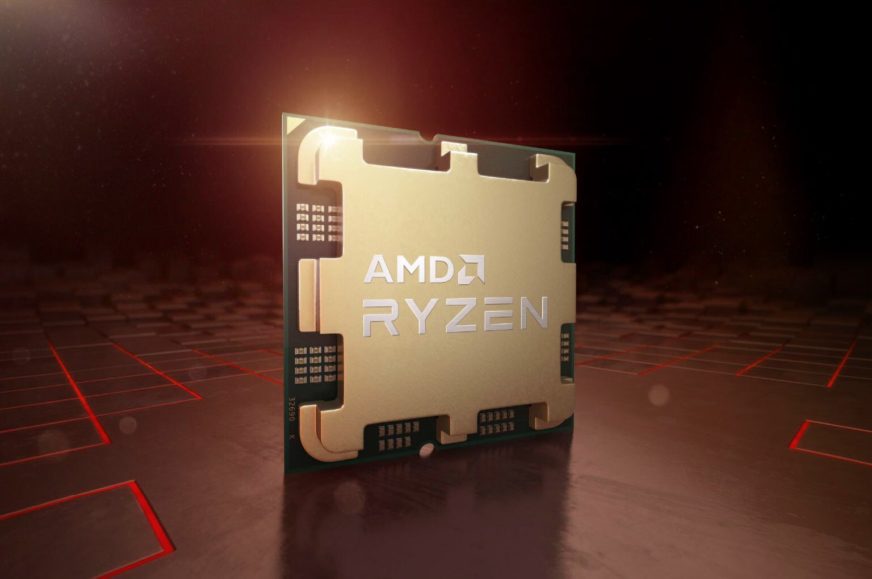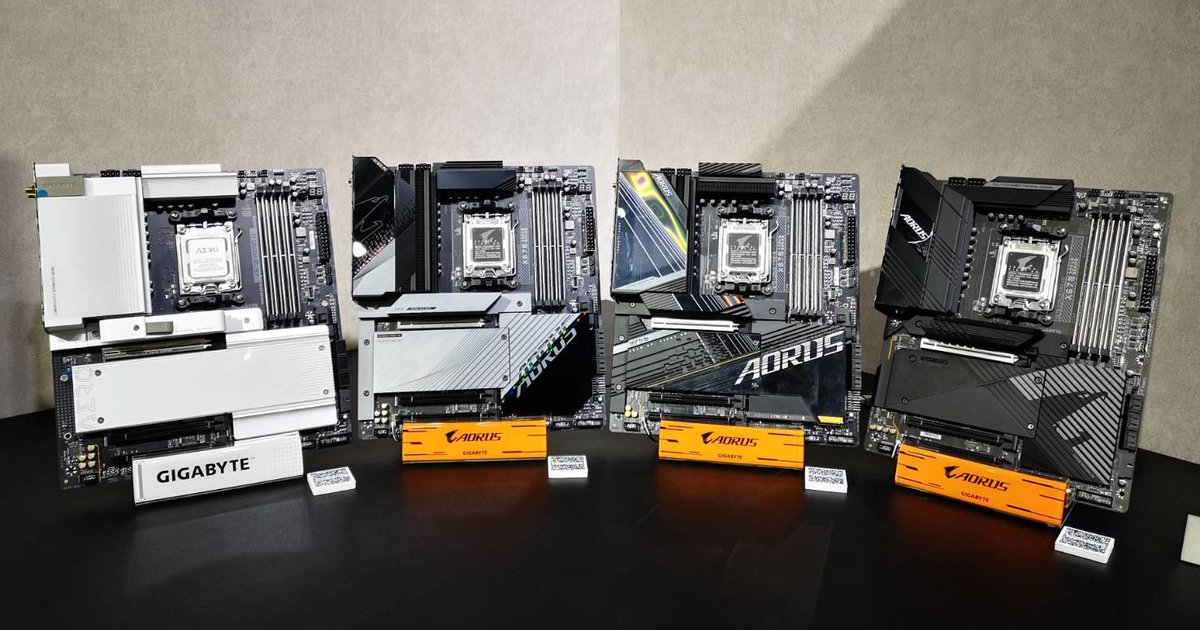AMD shares more details on the AM5 platform and Ryzen 7000
We’ve already had an article about AMD’s Ryzen 7000 CPUs and what was revealed about them at Computex 2022, but we need to revisit them once more. AMD has since dropped more details about the features of these CPUs, new instructions and technologies. The situation around TDP and maximum power draw was also clarified, and AMD also said something about the reported performance numbers that caused a bit of a stir on Monday.
The biggest chunk of additional details on the Ryzen 7000 came from an article on TechPowerUp, which interviewed Robert Hallock of AMD’s technical marketing, asking for various details, but similar tidbits have appeared elsewhere as well.
How about the 170W TDP and what will be the maximum power draw?
We can start with one official retraction, which concerns the matter of maximum power draw of processors on the AM5 platform. First AMD stated that the socket is prepared for maximum TDP up to 170 W. But then Robert Hallock caused confusion when he “confirmed” that this number was not about TDP, but about PPT, i.e. maximum power draw. The so-called PPT is usually (there are exceptions) 1.35× higher than the TDP, so this would be a big difference – at 170W TDP the processors would have 230W maximum power draw, at 170W PPT the maximum would really be 170W.
Nevertheless, Robert Hallock was himself confused and used wrong information at the time and the correct version was the hotter scenario. On the AM5 platform there will be processors with 65W TDP (88W PPT), 105W TDP (142W PPT) as on AM4, but additional configurations will be possible now: firstly SKUs with 125W TDP, that will have 170W PPT, and finally the second new and most extreme option will be 170W TDP, for which the PPT will be set to 230W. These power tiers will allow for the release of processors with higher multi-threaded performance – we expect them to be used mainly in the models with the most cores (so especially around 16 cores and/or the future Zen 5 with 24 and 32 cores). Anyway, this will not apply to all Ryzen 7000s, processors with fewer cores should still have 65W and 105W TDP (88W and 142W PPT).
Performance: 16 cores, no more
From power to performance now. AMD has officially confirmed that the Ryzen 7000 will have a maximum of 16 cores. A glance at the processor substrate already indicated that nothing more was planned, but now it’s official. AMD probably doesn’t plan to have more than two CPU chiplets on the AM5 platform for the foreseeable future (probably also in the 8000 generation), so 24 and 32 cores will only be possible when they increase the number of cores in the CPU chiplet to 16. This could come with Zen 5, but for now that’s still just a rumor from youtuber sources, so who knows.
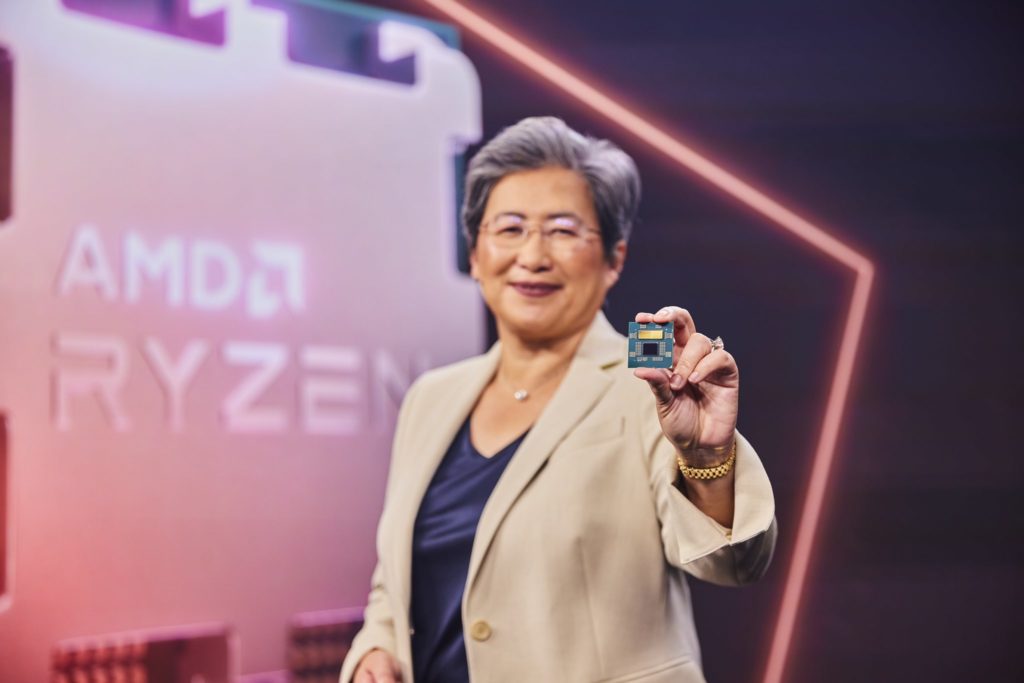
Alongside this, we have some more details on the performance demo at Computex. AMD presented a Blender rendering where the 16-core Zen 4 sample was 46 % faster than the Core i9-12900K (AMD quoted a figure of 31 %, but that was a reduction in the time required – 1.46x faster performance means a 69 % reduction in time). AMD confirmed that this was not an overclock (the cooling was also a mostly normal 280mm AIO). But the processor was reportedly not a production model and probably not a qualifying sample either. It seems that it was an ES sample, which may not have the specs of the final CPU.
15 % speedup is a conservative figure
Lisa Su’s announcement that Ryzen 7000 single-thread performance (measured again on a 16-core ES processor) is expected to increase by “more than 15 %” caused a big stir. Since AMD was also presenting the CPU’s ability to run at 5.5 GHz during boost (this wasn’t an overclock either), the inference began to be made that the IPC of the Zen 4 architecture would grow virtually by nothing compared to Zen 3, as some 9–10 % of the performance bump may already be from the frequency growth alone.
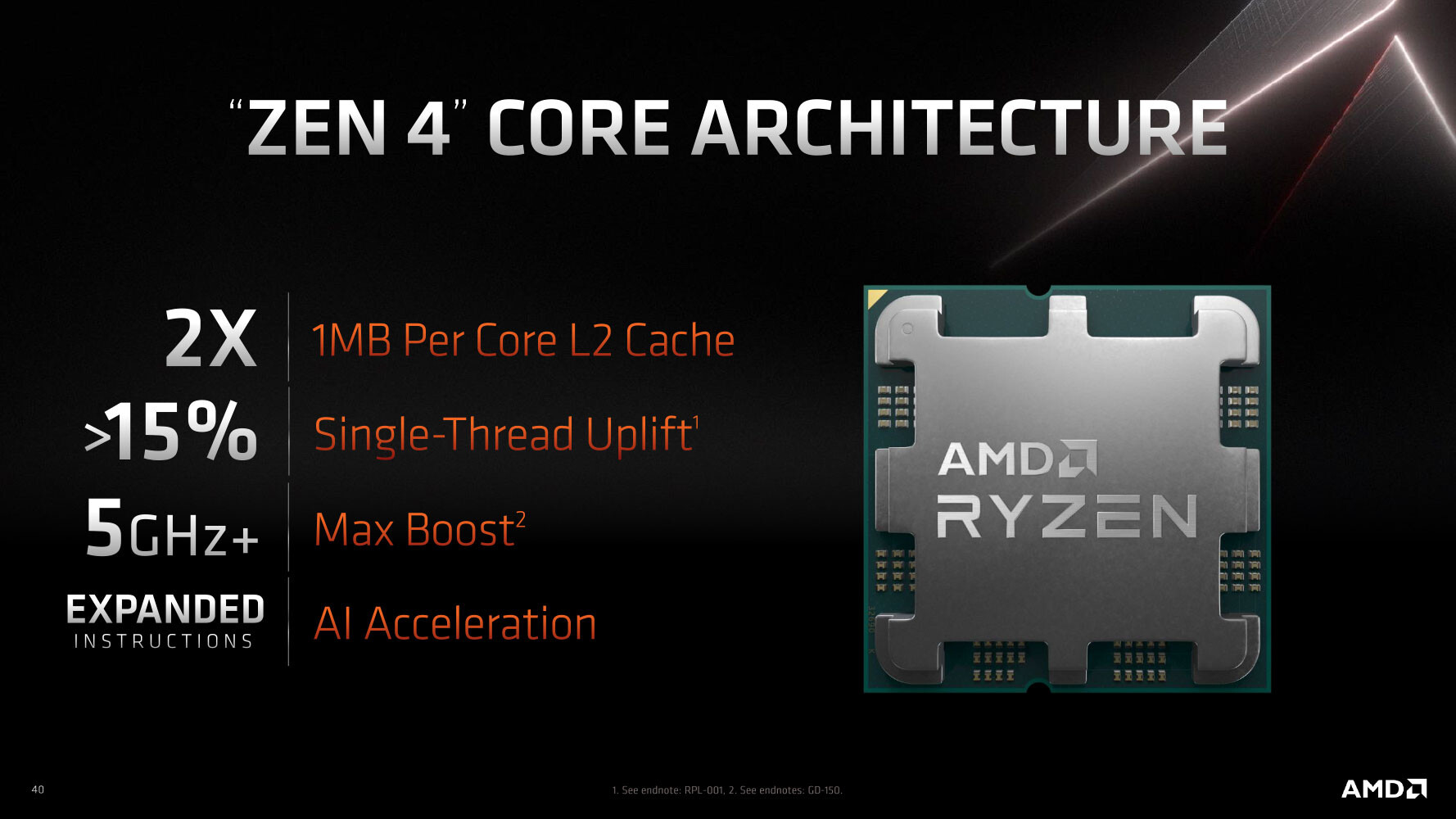
Robert Hallock responded to this by saying that the company was deliberately being “conservative in more ways than one” with its single-thread performance figures. Such a position might have been taken by the company because there is still a long time before release, and the final models are not set in stone yet. There is said to be quite a bit of headroom in this figure, so that “more than” qualifier could probably mean more than just one or two extra percentage points.
According to Hallock, AMD plans to say more about performance and will clarify how much of that is the work the frequencies and how much is due to “IPC” (i.e. performance at a given same frequency) improvement. And also what the benefits of the 5nm process and architecture are, and information on power draw and core/chip size. These further details should supposedly be revealed later in the summer, but a more precise date has not been promised. It probably won’t be at Hot Chips, AMD is supposed to present the mobile Ryzen 6000s there according to the announced schedule, not the Zen 4/Ryzen 7000s.
3D V-Cache coming to the Zen 4 generation as well
Further details on features and technologies were also revealed. AMD has confirmed that the Ryzen 7000 will also eventually get 3D V-Cache technology, which like in the Ryzen 7 5800X3D should significantly increase gaming performance. However, it will probably not be available at release, models with 3D V-Cache will probably come to the market only with some delay, perhaps again in the spring of 2023.
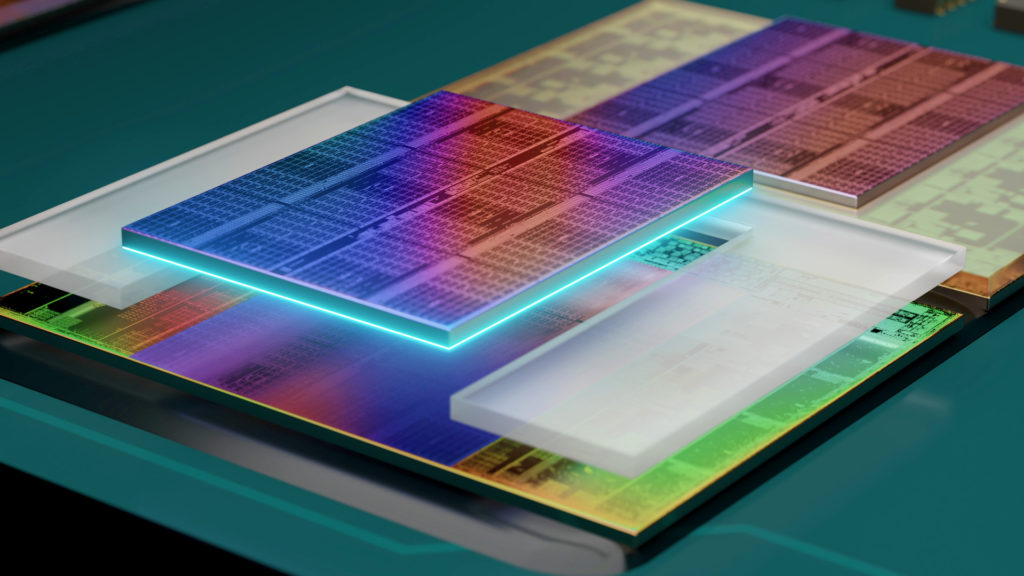
AVX-512, VNNI, BFloat16 confirmed
AMD has also already basically admitted that Zen 4 will include support for AVX-512 instructions, although the Computex presentation only said “new instructions”. It should be noted here that it’s likely that support for these 512-bit instructions is still via 256-bit units that are likely similar to what Zen 3 already has (and their count doesn’t seem to have increased). Additionally, it is also possible that at this stage some instructions may just have a slow implementation through microcode.
Therefore, the theoretical computational throughput will probably not increase and it is not reasonable to expect any big performance increases thanks to AVX-512 – at this stage it is only about compatibility with the code that uses these instructions, while the performance may increase in later Zen cores sometime in the future.
AMD also revealed what’s behind their mention of “AI acceleration”. As we had guessed, this wasn’t talking about dedicated AI units, but instruction set extensions. Robert Hallock has now confirmed that it is firstly about VNNI instructions (these are an optional subset of AVX-512 and contain some potentially very useful operations), the second part of this AI acceleration will be support for computations with the BFloat16 data type.
IO chiplet
More details have also emerged about the IO chiplet and the integrated graphics contained therein. The IO chiplet, which uses an advanced 6nm manufacturing process, appears (or so it is implied) to be based on the same technologies also used in the 6nm Ryzen 6000. This is said to include the presence of some power-saving technologies from these APUs, which have seen a number of optimizations to improve power draw and battery life.
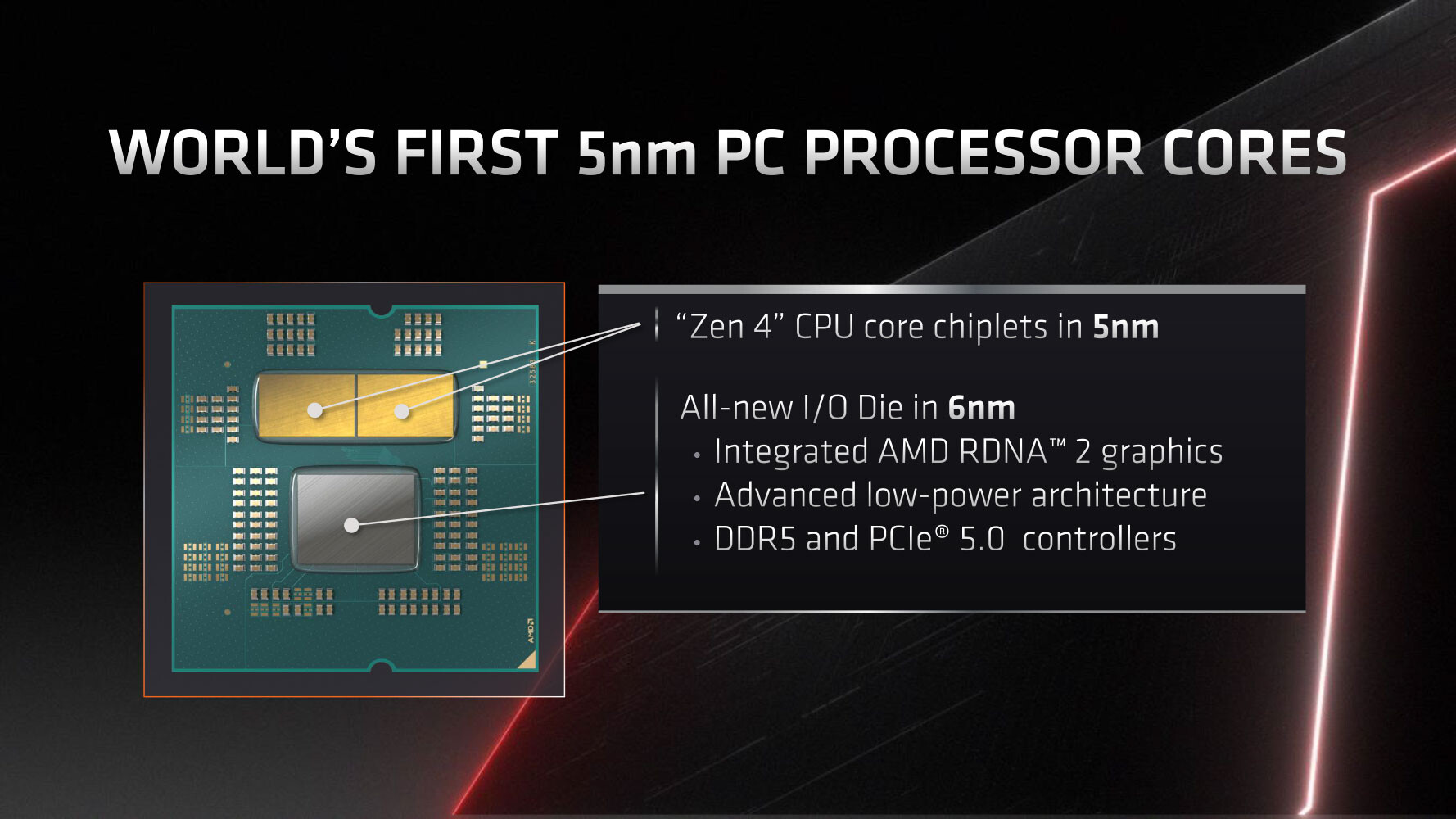
This will probably be very important for Ryzen 7000 “Dragon Range” laptops, but Robert Hallock’s announcement suggests that there might be some benefits for users of desktop “Raphael” processors on the AM5 platform, too. The IO chiplet reportedly plays a significant part in advances in power draw and energy efficiency of Ryzen 7000.
Graphics will be capable of AV1 and HW encoding
The graphics core itself, which is located in the IO chiplet and is new to the Ryzen 7000, was said to have no major gaming performance and only a bare minimum of compute units will be present. Its purpose is to provide the basic necessary functions for connecting monitors and the compute units/shaders are only supposed to have the basic necessary amount. Exactly how much that means, AMD hasn’t said directly. But unofficial information states that it’s just one WorkGroup Processor, which is just 2 CUs or 128 shaders. Given the higher performance of the RDNA 2 architecture, the best that can be expected from this iGPU is to be roughly on par with Intel’s 256 shader integrated graphics like in the Alder Lake desktop processors.
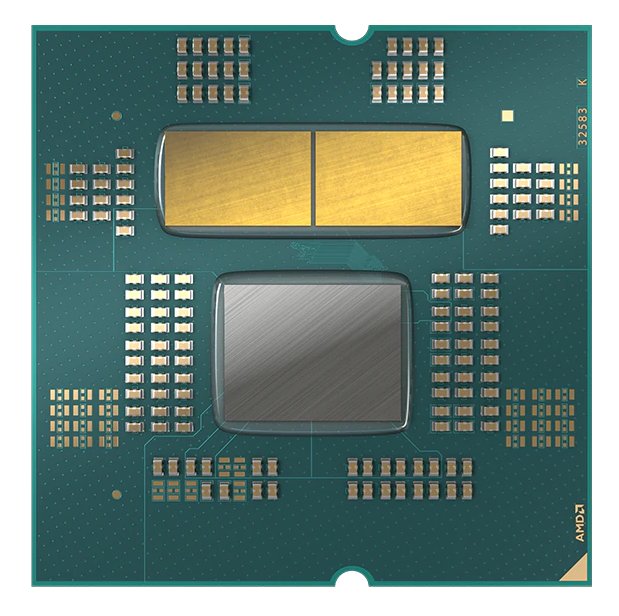
Unlike gaming performance however, multimedia support is seen as important and will not be forgotten according to AMD. The Ryzen 7000’s integrated graphics with Zen 4 cores are said to have the same multimedia capabilities as the iGPU in the Ryzen 6000 Rembrandt. It is said to support hardware video decoding in AV1 format. And there’s supposedly a hardware encoder, which the low-end Radeon RX 6500 XT and RX 6400 cards lack. However, the encoder should only compress to HEVC and H.264, as the Ryzen 6000 cannot yet encode AV1 in hardware. In addition to the VCN block for video compression, the DCN blocks for monitor output are also said to be taken from Rembrandt, with both DisplayPort 2.0 and HDMI 2.1 to be supported.
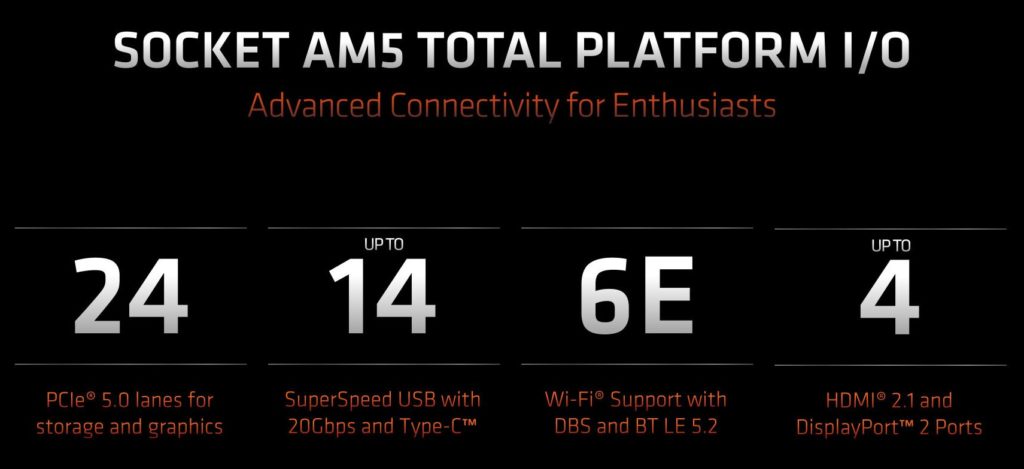
The integrated GPU is apparently contained in the IO chiplet (which also carries the chipset/SoC functions, they may take up a lot of space) and supposedly doesn’t consume that much chip area, the yield of the IO chiplets should be quite high. Thanks to that most, if not all Ryzen 7000 processor models are said to have this graphics core active. So it shouldn’t be some extra feature that will only be available on more expensive processors at an extra cost (probably doesn’t mean that there will never be any model with iGPU disabled, but if there is, it will probably be more of an exception).
AMD says that this underpowered, almost “2D” graphics doesn’t mean the company won’t offer processors with more powerful iGPUs suitable for some gaming any more. Such “APU” processors will continue to be offered, but will come later. It’s likely that means the Ryzen 7000 “Phoenix” in 2023.
Overclocking on B650: still no limitations
Of the other things that AMD representatives have said now, it’s probably worth mentioning that the AM5 platform is not supposed to limit overclocking options in any way. Those tools and unlocked settings that were available on the Ryzen 3000 and 5000 are more or less carried over to the Ryzen 7000 as well.
Tip: AMD X670, X670E, B650 chipsets and AM5 platform for Zen 4: PCIe 5.0 and other connectivity in detail
AMD also confirmed that there will be no reduction in overclocking capabilities on the cheaper B650 chipset, which will continue to support OC of the CPU cores, memory and uncore. There was no mention of the A620 though, so low-end boards with it will probably still have overclocking disabled.
More things will probably be announced by AMD during the summer and other information will probably gradually leak unofficially. Thus, we will probably still be getting various information about the Ryzen 7000 and Zen 4 on an ongoing basis in the coming months, until their fall release.
More: Ryzen 7000, AM5 platform boards and X670/X670E chipsets at Computex 2022
Sources: TechPowerUp, PCWorld, Reddit
English translation and edit by Jozef Dudáš, original text by Jan Olšan, editor for Cnews.cz
⠀





